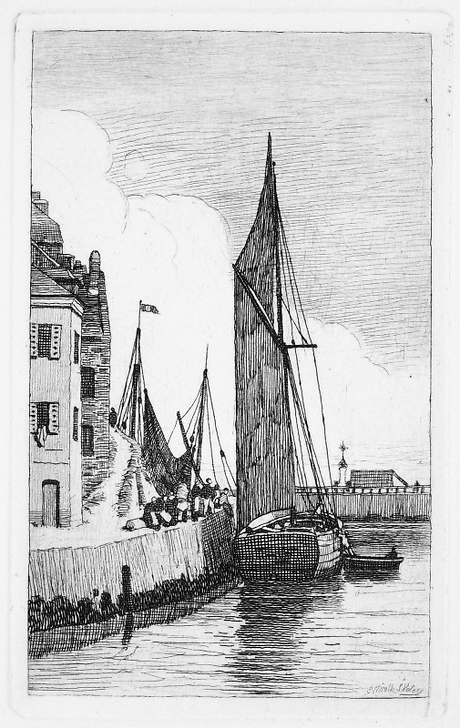Engraving Ascent to the cliff at Saint-Valery-en-Caux - Emile-Frédéric Nicolle
KM007055
The Royal Academy of Sciences, founded in 1666 by Louis XIV, on the advice of the Prime Minister Jean-Baptiste Colbert, initiated learned works that the "ordinary engravers of the King" were to illustrate. Claude Perrault (physician and architect, brother of the storyteller) entrusted Denis Dodart (1634-1717...
Read more
The Royal Academy of Sciences, founded in 1666 by Louis XIV, on the advice of the Prime Minister Jean-Baptiste Colbert, initiated learned works that the "ordinary engravers of the King" were to illustrate. Claude Perrault (physician and architect, brother of the storyteller) entrusted Denis Dodart (1634-1717) and his collaborators with the project of a History of Plants, which was to assemble scientific descriptions and faithful illustrations of the plants studied.
Nicolas Robert, Abraham Bosse and Louis de Chastillon engraved 319 plates between 1668 and 1699. The technique used was etching, with the main concern being to render the gradation of colors through engraving: "We prefer etching to all others, because it has more freedom and is quicker and easier.
In 1676, a first edition of Mémoires pour servir à l'Histoire des plantes was published with 38 of these plates, engraved by Nicolas Robert and Abraham Bosse between 1668 and 1676. In 1676 Abraham Bosse died and Louis de Châtillon succeeded him in the collaboration to the work. But the project remained unfinished and in 1694 the Academy renounced a complete publication. However, at the beginning of the 18th century, the Imprimerie Royale produced a few complete editions of the 319 plates, intended for the presents that the King made.
These 319 copperplates are today preserved in the Chalcographie du Louvre, which inherited the engraved plates from the royal collections.
The aim of the Histoire des plantes was to provide a faithful illustration for each of the plants studied. Each plant was reproduced in life size, either in its entirety or in detail (root, leaf or flower). In order to offer the most accurate representation, the Academicians supervised the work of the artists, comparing drawings, engravings, descriptions and the plants themselves.
Louis de Châtillon also engraved after Sébastien Leclerc the Mémoires pour servir à l'histoire naturelle des animaux, as well as the 14 plates of the Plans et profils, Petites Conquestes servant à l'Histoire de Louis XIV, which belonged to the King's Cabinet and which the Chalcographie du Louvre still possesses today.
Close
Login to see prices
Sold by GrandPalaisRmn





